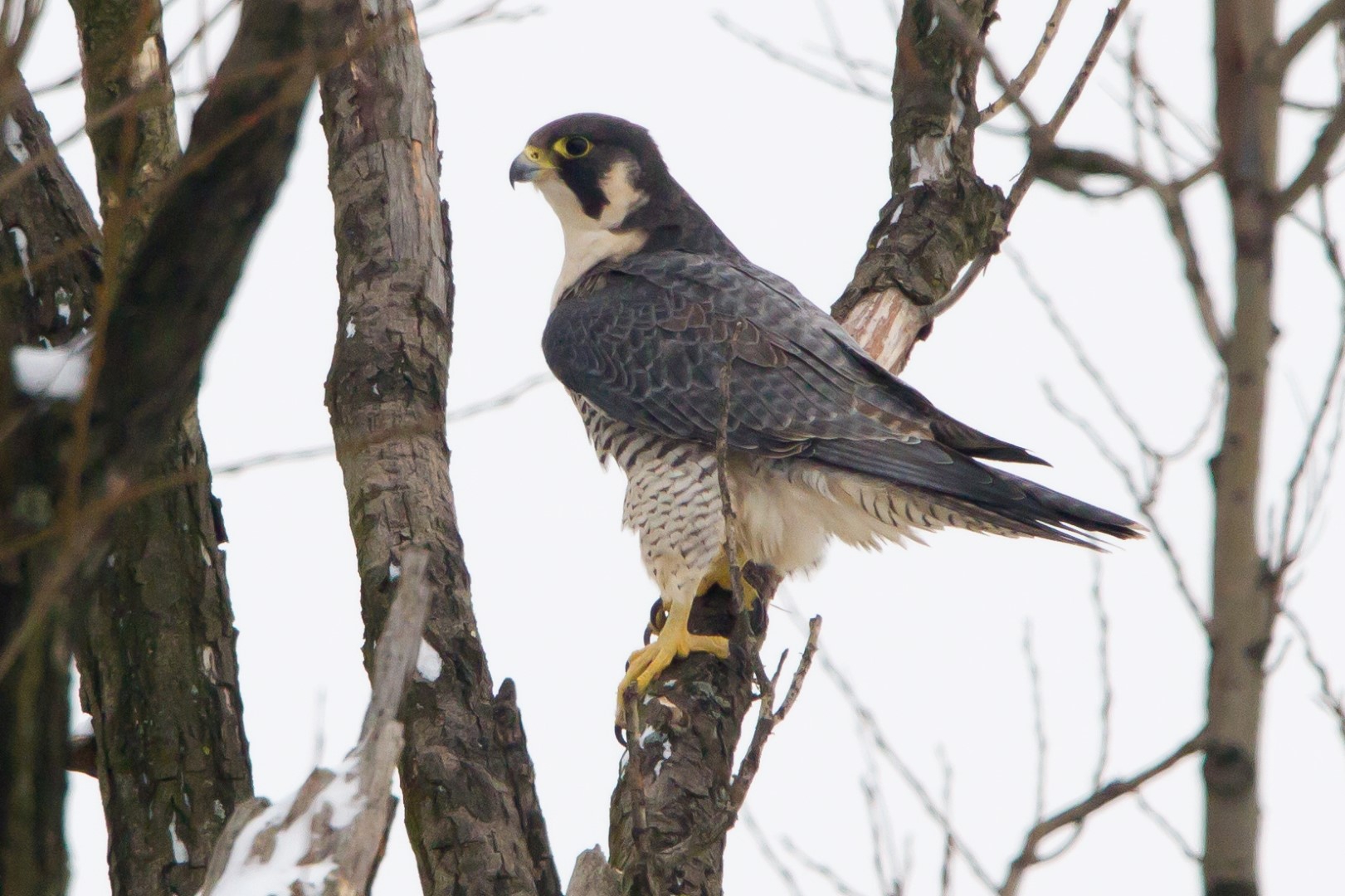| Citation |
BirdLife International 2016. Falco peregrinus. The IUCN Red List of Threatened Species 2016: e.T45354964A95143387. http://dx.doi.org/10.2305/IUCN.UK.2016-3.RLTS.T45354964A95143387.en. Downloaded on 22 October 2019. |
Description |
JUSTIFICATION
This species has an extremely large range, and hence does not approach the thresholds for Vulnerable under the range size criterion (extent of occurrence <20,000 km2 combined with a declining or fluctuating range size, habitat extent/quality, or population size and a small number of locations or severe fragmentation). The population trend appears to be stable, and hence the species does not approach the thresholds for Vulnerable under the population trend criterion (>30% decline over 10 years or three generations). The population size is extremely large, and hence does not approach the thresholds for Vulnerable under the population size criterion (<10,000 mature individuals with a continuing decline estimated to be >10% in 10 years or three generations, or with a specified population structure). For these reasons the species is evaluated as Least Concern.
HABITAT AND ECOLOGY
Behaviour Birds are highly migratory in the temperate and Arctic parts of its range, moving from North America to South America, Europe to Africa, and northern Asia to southern Asia and Indonesia. Those breeding at lower latitudes or in the Southern Hemisphere tend to be resident (del Hoyo et al. 1994). Migrating birds leave their breeding sites between August and November, and return between March and May (Snow and Perrins 1998). Migrants readily fly over expanses of sea and ocean. Most birds travel singly or in pairs, even on migration (Ferguson-Lees and Christie 2001). Habitat It inhabits an extreme variety of habitats, tolerating wet and dry, hot and cool climates, from sea level up to c.4,000 m (del Hoyo et al. 1994). Diet Birds make up most of its diet, principally pigeons and doves (del Hoyo et al. 1994). Breeding site Eggs are usually laid in a scrape or depression in a rock face, with no nest being built (del Hoyo et al. 1994). Management information Populations recovered following the ban of harmful hydrocarbons in most countries, which appears important to the birds’ survival (del Hoyo et al. 1994).
THREATS
Historically, the species was affected by shooting in the U.K., notably during the Second World War (Ferguson-Lees and Christie 2001). Persecution throughout its range was the major threat in the 19th and early 20th centuries (Snow and Perrins 1998). Severe population declines in the 1960s-1970s were driven by eggshell breakage and mortality of adults and embryos from the hydrocarbon contamination associated with pesticides of that time (Ferguson-Lees and Christie 2001, White et al. 2013). The species is used extensively in falconry, although the population-level impacts of this are uncertain (White et al. 2013). Rock climbing activities pose a threat to the speciess nest sites (Global Raptor Information Network 2015). In its West African range, the species may be vulnerable to habitat degradation through wood harvesting, overgrazing and burning as well as exposure to pesticides (Thiollay 2007). It is highly vulnerable to the effects of potential wind energy development (Strix 2012). An oil spill in northern Spain was thought to have reduced reproductive success and caused adult mortality in the local population (Zuberogoitia et al. 2006).
CONSERVATION ACTIONS
Conservation Actions Underway
The tree-nesting population in central and eastern Europe declined from c. 4,000 pairs to extirpation, before restoration efforts in Germany and Poland returned it to c. 20 pairs. Significant further efforts are needed to fully restore it across its former range, which included Germany, Poland, Russia, Belarus and the Baltic States (European Peregrine Falcon Working Group in litt. 2007). |

